
SS Yale, a 3,731 gross ton coastal passenger steamship, was built by the Delaware River Iron Shipbuilding and Engine Works in 1906, for service between New York and Boston. In March 1918 the U.S. Navy acquired her from the Pacific Steamship Company of Seattle, Washington, placing her in commission later in that month as USS Yale (ID-1672).

USS Refuge (AH-11), was a hospital ship of the United States Navy during World War II. The ship was built in 1921 by the New York Shipbuilding Corp., of Camden, New Jersey, as SS Blue Hen State, but was renamed President Garfield in 1923 and then SS President Madison in 1940 for service with American President Lines. Acquired by the Navy from the War Shipping Administration on 11 April 1942 the ship was commissioned as the transport USS Kenmore until conversion to a hospital ship.

USS Monadnock (ACM-10) was a coastal minelayer in the U.S. Navy, the third vessel named after Mount Monadnock, a solitary mountain (monadnock) of more than 3,100 feet in southern New Hampshire close to the border of Massachusetts. The ship was built as the cargo vessel Cavalier for the Philadelphia and Norfolk Steamship Company by Pusey and Jones Corporation, Wilmington, Delaware in 1938. The Navy purchased the ship 9 June 1941 for wartime use. After decommissioning the ship was sold in June 1947 for commercial use then sold to a Panamanian company in 1949 to be renamed Karukara. In 1952 the ship became Monte de la Esperanza for a company in Bilbao, Spain transporting bananas to the United Kingdom from the Canary Islands for more than 20 years. She was later sold to the Marine Institute of Spain for operation as a hospital ship for more than 10 years serving the fishing fleet of the Canary Islands as Esperanza del Mar until becoming an artificial reef off Spain in 2000.

USS Miantonomah (CM-10/CMc-5) was built as SS Quaker by Pusey & Jones Corporation, Wilmington, Delaware in 1938 as a commercial coastwise ship operating as a fast inland water passenger and freight carrier. Quaker was acquired by the Navy in May 1941 for conversion to a coastal minelayer. Miantonomah operated off the east coast of the United States, Africa and the Mediterranean and took part in the invasion of Europe in 1944. The ship was sunk by a mine 25 September 1944.
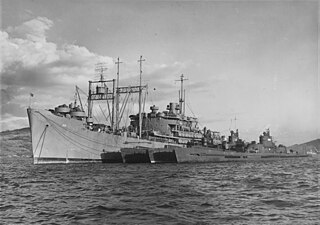
USS Euryale (AS-22) was built as the Hawaiian Merchant by the Federal Shipbuilding and Drydock Company in Kearny, New Jersey for the Matson Navigation Company. Hawaiian Merchant was launched 12 April 1941, minutes after sister ship Hawaiian Shipper, and was completed April 1941. Matson intended the ship to join Hawaiian Planter and Hawaiian Shipper in the U.S. Pacific Coast—Australia route. The ship was under United States Army Transportation Corps charter when the United States went to war and came under the control of the War Shipping Administration which allocated the ship to the Army's continued charter until the ship was purchased 15 April 1943 by the United States Navy and commissioned 2 December 1943 as USS Euryale (AS-22), serving as a submarine tender through the war. Euryale was decommissioned 7 October 1946, going into reserve until 9 August 1972 when she was delivered to the Maritime Administration with immediate sale to American Ship Dismantler, Inc. for disposal.

USS Hugh L. Scott (AP-43) was a Hugh L. Scott-class transport ship. She was built in 1921 and spent 20 years in merchant service as a passenger and cargo liner. In July 1941 the ship was delivered to the United States Department of War for Army service as the United States Army Transport Hugh L. Scott operating in the Pacific. In August 1942 the ship was transferred to the United States Navy for conversion to an attack transport, served as a troopship in Operation Torch in November 1942, and was sunk by a U-boat four days later. 59 crewmen and soldiers died during the sinking.
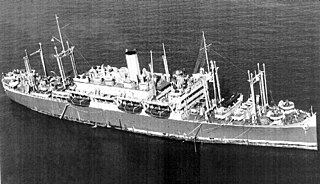
SS President Cleveland was originally built as Golden State for the United States Shipping Board (USSB), one of the planned World War I troop transports converted before construction into passenger and cargo vessels launched as Emergency Fleet Corporation Design 1029 ships first known, along with the smaller Design 1095 versions, in the trade as "State" ships due to names assigned for the nicknames of states and later as "535s" for their length overall. Almost all ships of both designs were renamed for United States presidents by May 1921, with Golden State being renamed President Cleveland. As one of the USSB-owned ships operated by agents of the board, President Cleveland was allocated to and operated by the Pacific Mail Steamship Company until sold by the USSB to the Dollar Steamship Line in 1925. After the demise of that line and creation of a new, replacement line, American President Lines, the ship remained with that line until government acquisition for the Second World War.

USS George F. Elliott (AP-13) was a Heywood-class transport acquired by the U.S. Navy during World War I and then reacquired by the Navy for service as a troop carrier during World War II. In 1942, she was attacked off Guadalcanal by Japanese planes and sank shortly thereafter.

USS Talamanca (AF-15) was the United Fruit Company cargo and passenger liner Talamanca that served as a United States Navy Mizar-class stores ship in World War II.

Great Northern was a passenger ship built at Philadelphia by William Cramp & Sons under supervision of the Great Northern Pacific Steam Ship Company for the Spokane, Portland and Seattle Railway Company, itself a joint venture of the Great Northern Railway and Northern Pacific Railway. Great Northern, along with sister ship Northern Pacific, were built to provide a passenger and freight link by sea between the northern transcontinental rail lines via the Spokane, Portland and Seattle Railway terminal at Astoria, Oregon and San Francisco beginning in spring of 1915.
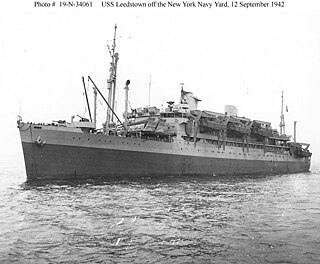
USS Leedstown (AP-73), built as the Grace Line passenger and cargo ocean liner SS Santa Lucia, served as a United States Navy amphibious assault ship in World War II. The ship had first been turned over to the War Shipping Administration (WSA) and operated by Grace Line as the WSA agent from February to August 1942 in the Pacific. In August the ship, at New York, was turned over to the Navy under sub-bareboat charter from WSA. She was sunk 9 November 1942 off the Algerian coast by a German submarine after German bombers caused damage the day before.

USS Henry T. Allen was a Harris class attack transport in service with the United States Army from 1940 to 1941. She was then transferred to the United States Navy where she served until 1946. She was scrapped in 1948. The ship was originally built as an Emergency Fleet Corporation Design 1029 ship in 1919 and operated in commercial service as Wenatchee and President Jefferson until being laid up in 1938.

SS Manchuria was a passenger and cargo liner launched 1903 for the San Francisco-trans Pacific service of the Pacific Mail Steamship Company. During World War I the ship was commissioned 25 April 1918–11 September 1919 for United States Navy service as USS Manchuria (ID-1633). After return to civilian service the ship was acquired by the Dollar Steamship Line in 1928 until that line suffered financial difficulties in 1938 and ownership of Manchuria was taken over by the United States Maritime Commission which chartered the ship to American President Lines which operated her as President Johnson. During World War II she operated as a War Shipping Administration transport with American President Lines its agent allocated to United States Army requirements. After World War II, she was returned to American President Lines, sold and renamed Santa Cruz. The liner was scrapped in Italy in 1952.

SS Point Bonita was constructed in 1918 and launched 27 March 1918 after a hull being built for foreign owners at Albina Engine and Machine Works was requisitioned during World War I by the United States Shipping Board (USSB). The ship saw service as the Navy transport USS Point Bonita, assigned Identification Number 3496, from 7 October 1918 to 7 April 1919, was returned to the USSB and saw civilian service with several commercial companies as San Pedro and Oliver Olson before again seeing service in World War II as USS Camanga (AG-42). After return to commercial service as Oliver Olson the ship was wrecked at the entrance to Bandon harbor in Oregon.
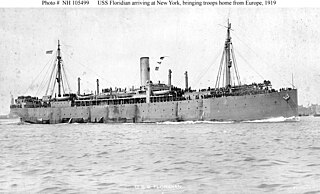
USS Floridian (ID-3875) was a United States Navy troop transport in commission in 1919.

President Taylor was a cargo-liner, ex President Polk, ex Granite State, requisitioned for war service in December 1941 and allocated by the War Shipping Administration (WSA) to the U.S. Army and operating as a troopship in the Pacific Ocean in World War II when grounded and eventually lost on 14 February 1942.

USAHS Marigold was a United States Army hospital ship during World War II. The ship was built as Old North State in 1920 for the United States Shipping Board as a civilian passenger/cargo liner. The ship changed ownership and operating companies several times with name changes to President Van Buren and President Fillmore before being acquired for military transport service in 1941. After government acquisition during World War II President Fillmore served as a War Shipping Administration troop transport before conversion to hospital ship service.

SS President Taft was launched as one of the "state" ships, Buckeye State, completed by the United States Shipping Board as cargo passenger ships after originally being laid down as troop transports. Buckeye State had been laid down as Bertrice but was converted and renamed before launching. Originally assigned to the Matson Navigation Company as the Shipping Board's agent, the ship was later renamed President Taft and assigned to Pacific Mail Steamship Company for operation. In 1925 the Shipping Board sold the ship to Dollar Steamship Company. President Taft was operated by Dollar and then its successor American President Lines until requisitioned by the War Department on 17 June 1941.
The Design 1095 ship was an Emergency Fleet Corporation (EFC) design for a troop transport to be built at New York Shipbuilding Corporation and delivered to the United States Shipping Board (USSB) that, at the end of World War I hostilities, was modified to a combined passenger and cargo vessel. The contract was for thirteen ships, EFC hulls 2579 though 2591, but later adjusted to seven ships with the remainder being changed during construction to the slightly larger ships of EFC Design 1029 built from the start as passenger and cargo ships rather than being modified from the troop ship plan.
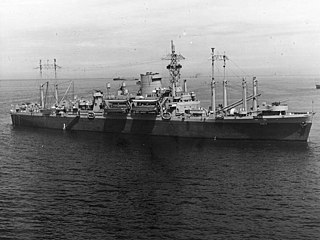
SS Panama was laid down 25 October 1937 as hull number 1467, launched on 24 September 1938 and completed 22 April 1939 at Bethlehem Shipbuilding Corporation in Quincy Massachusetts. The ship was given the official number 238343 and was owned and operated by the Panama Railroad Company. The ship was built for 202 single class passengers with a crew of 124. Panama was sister ship to USS Ancon and SS Cristobal.























